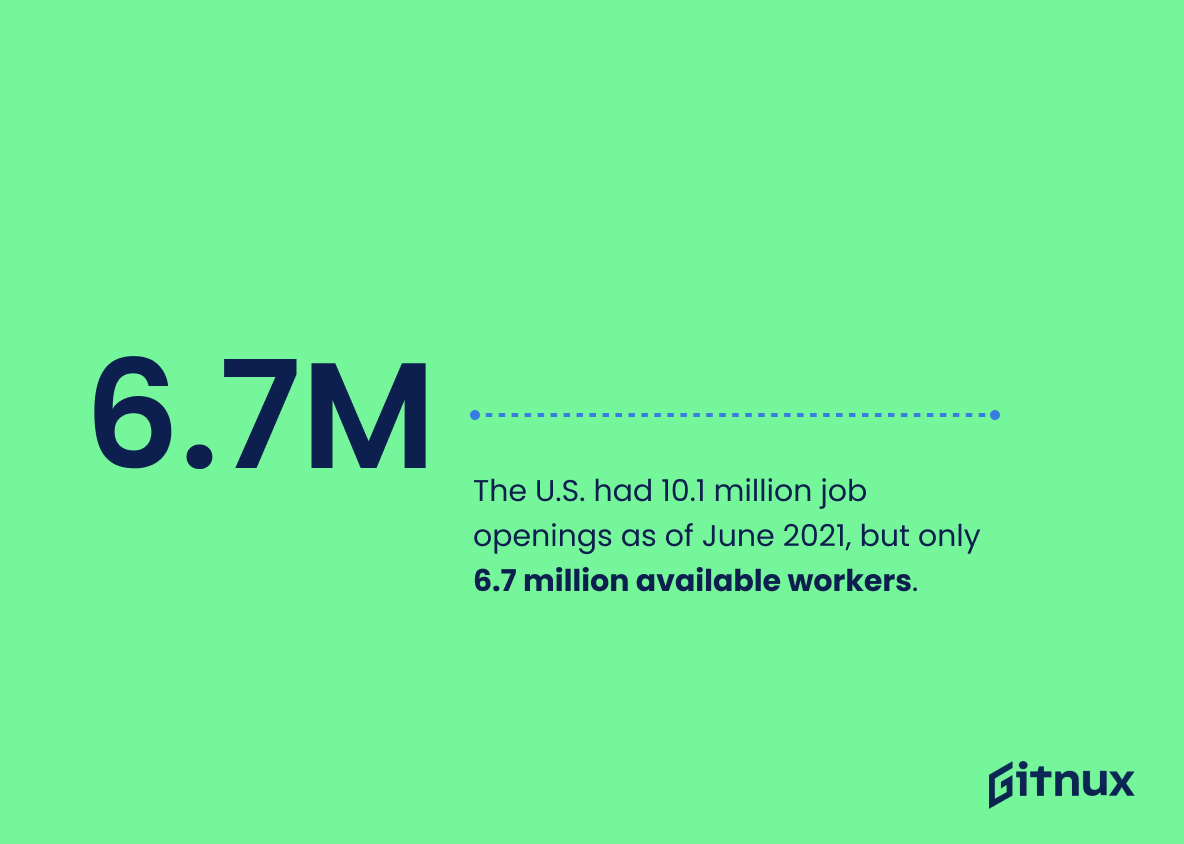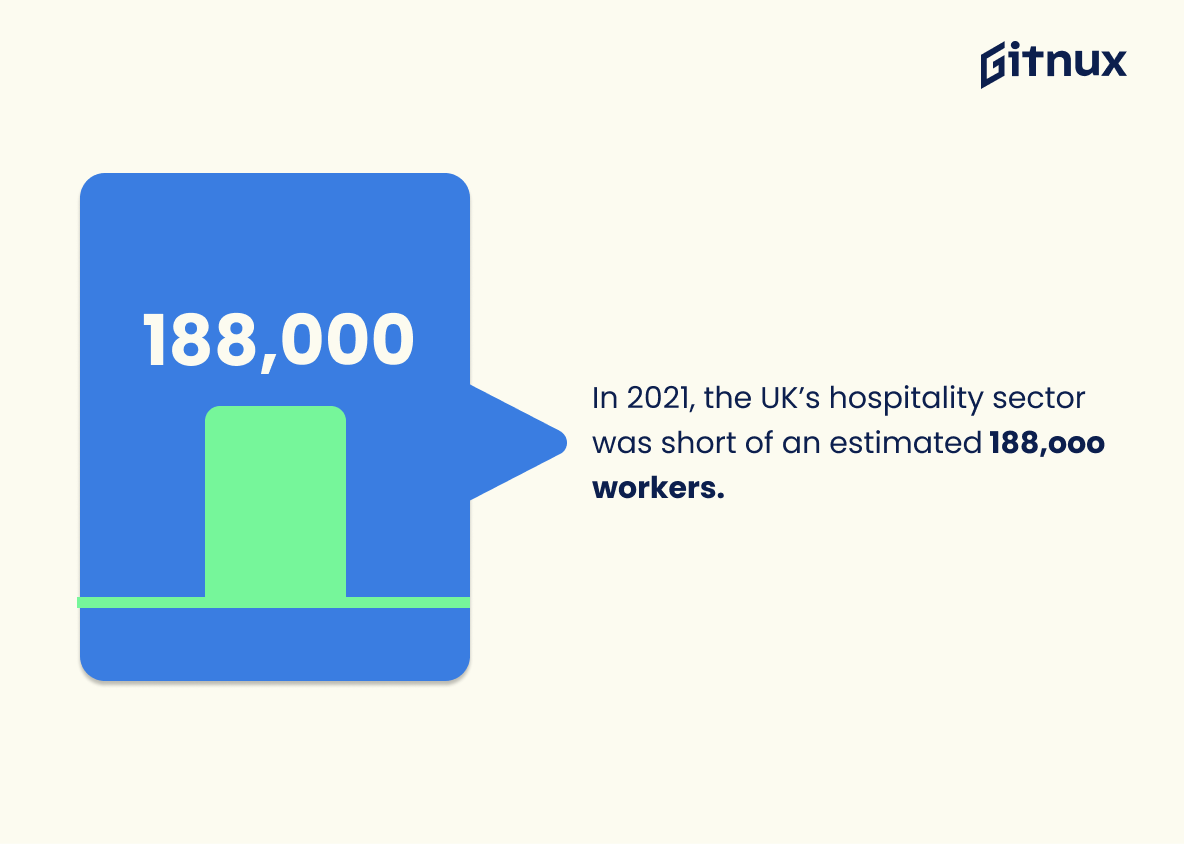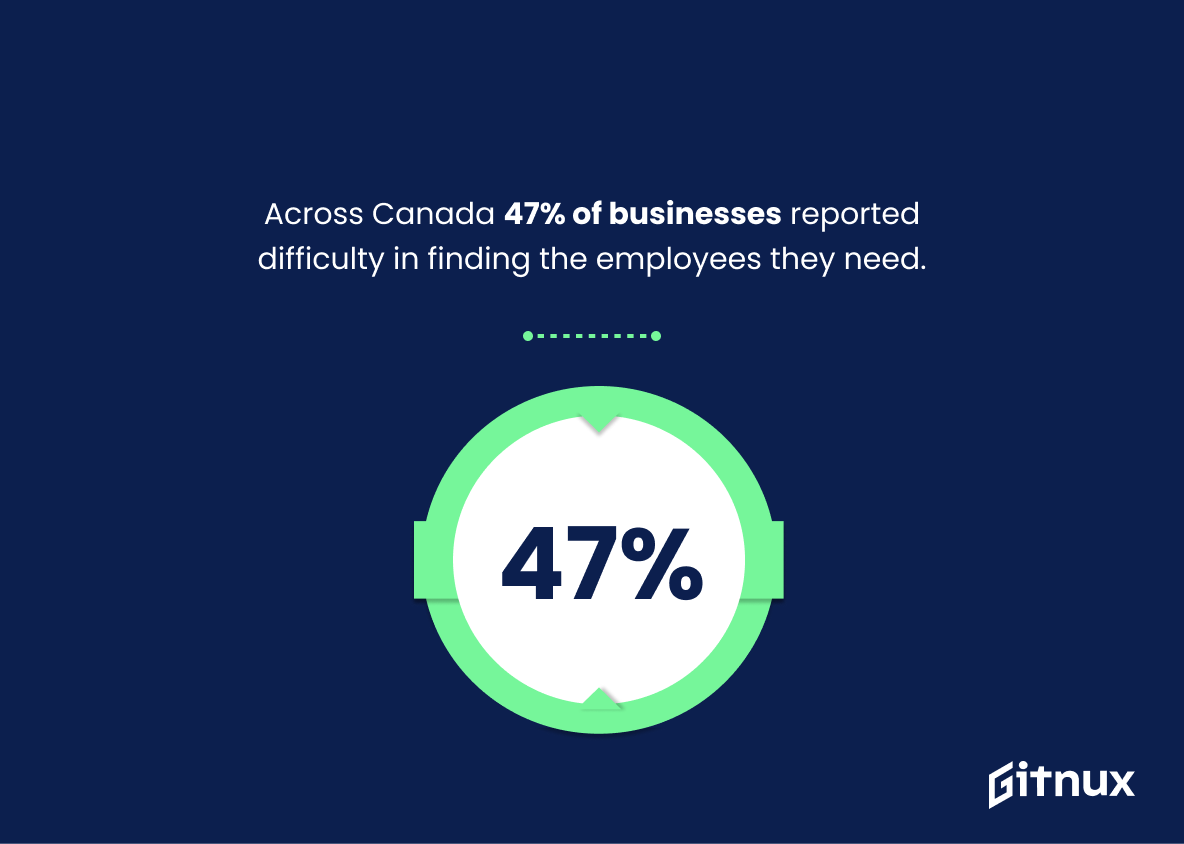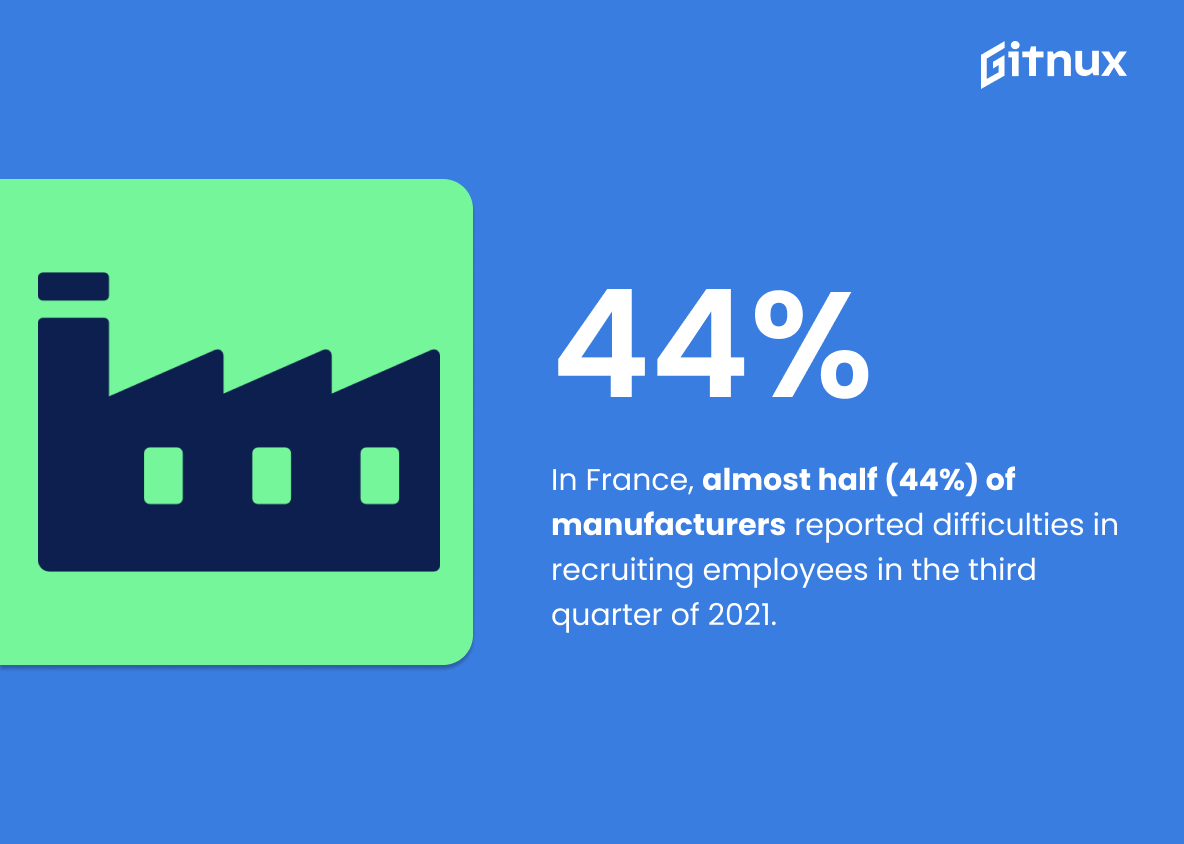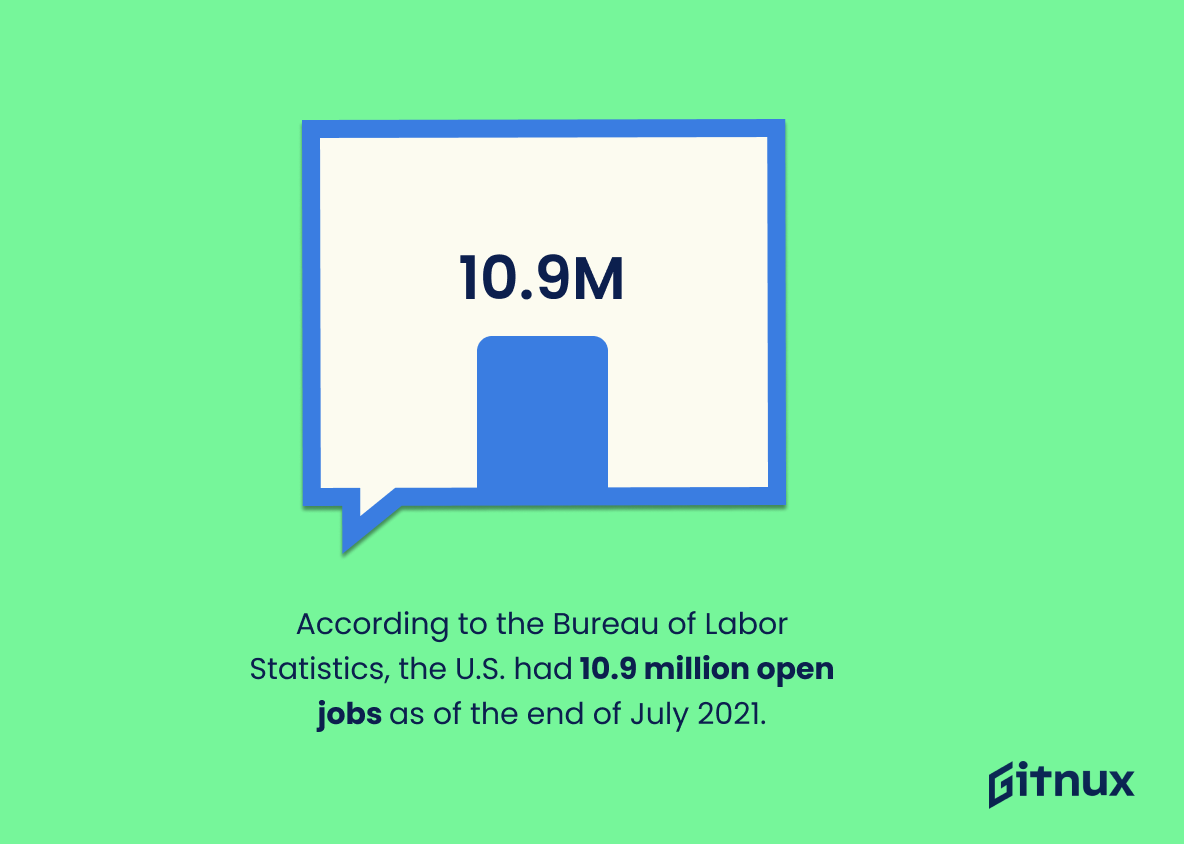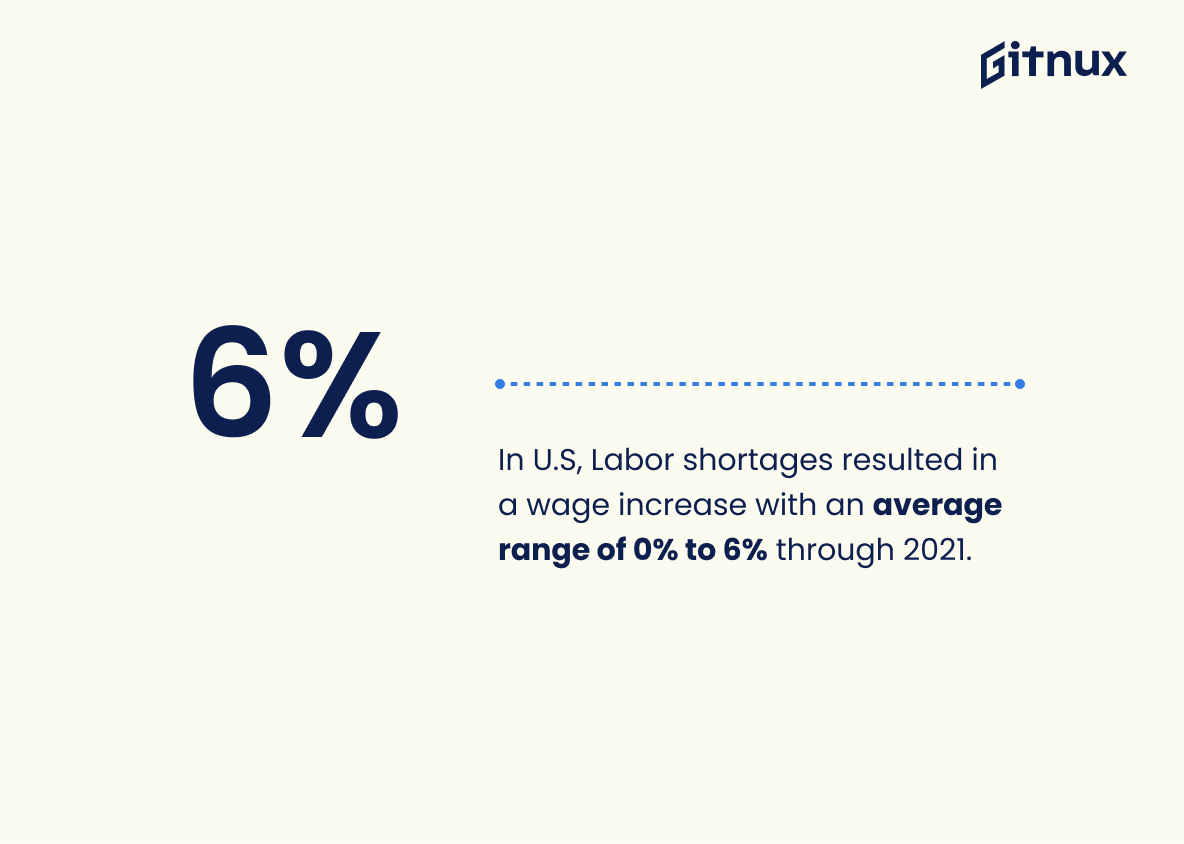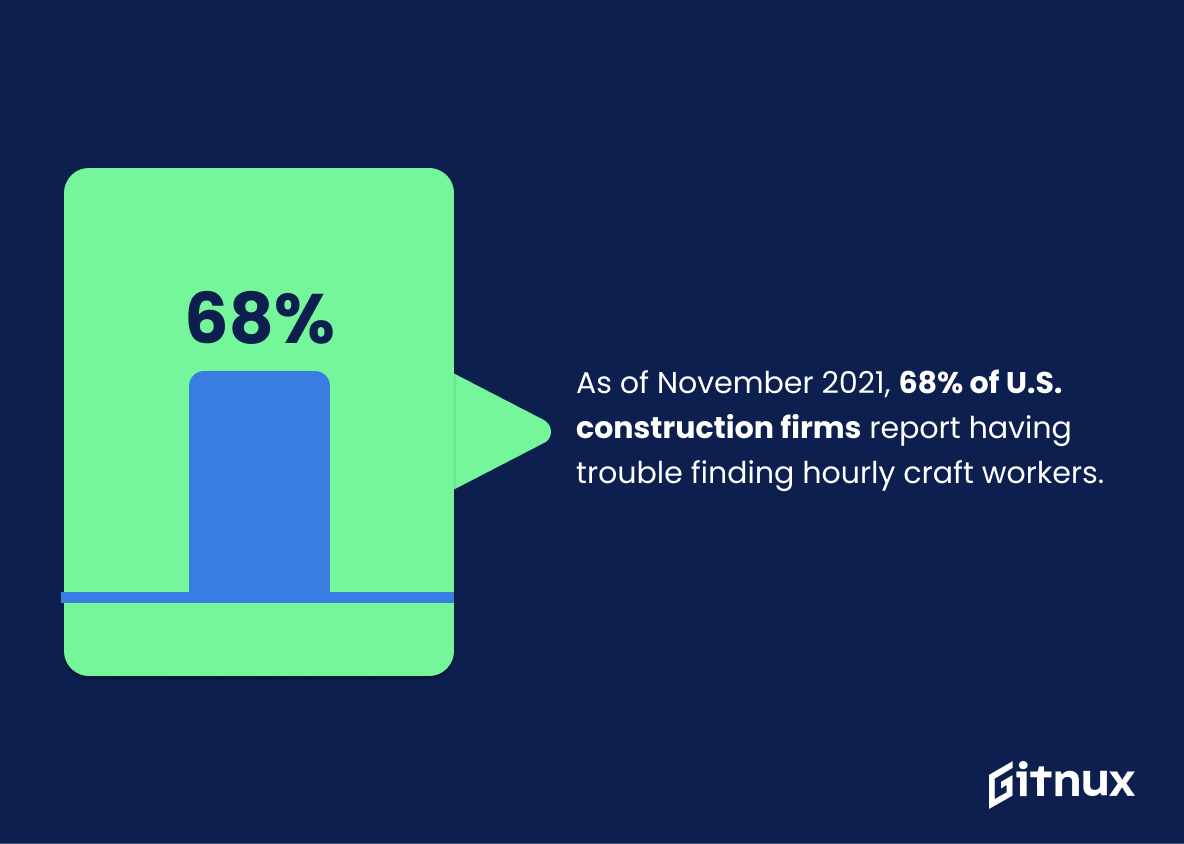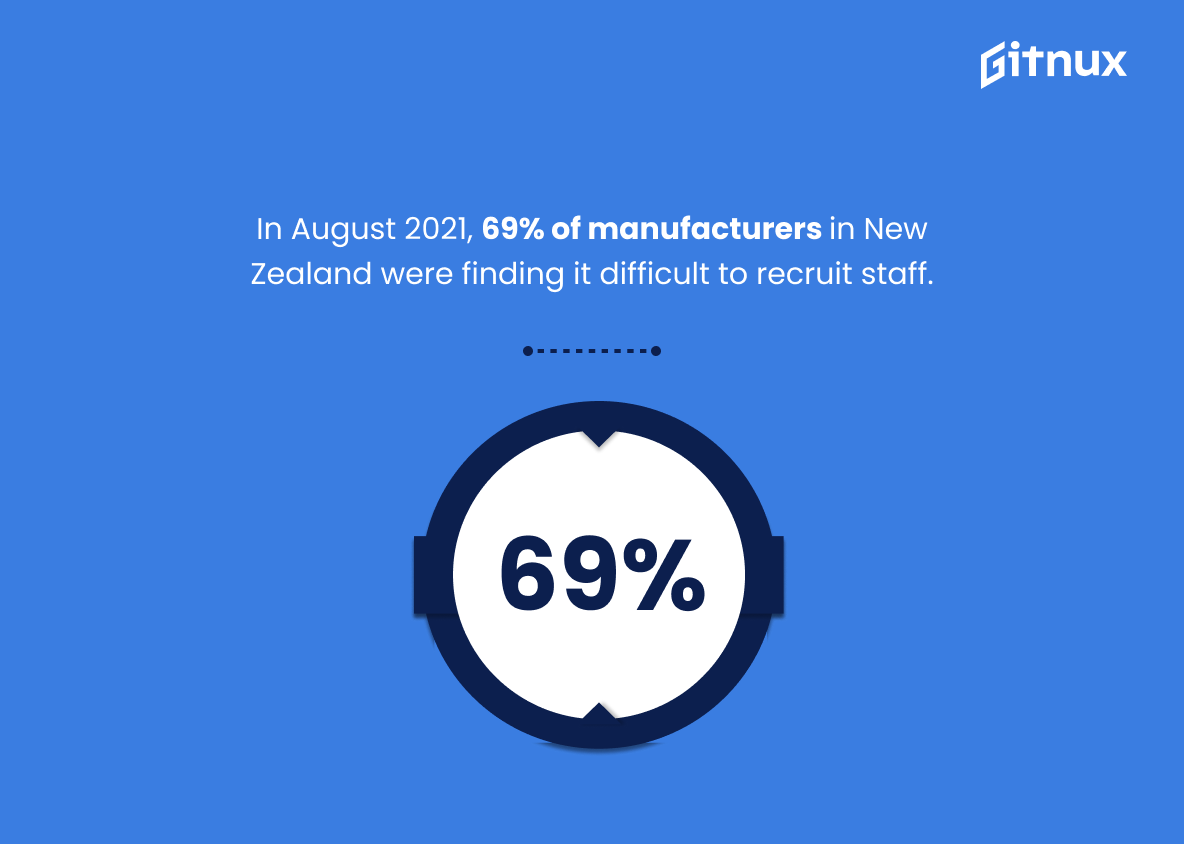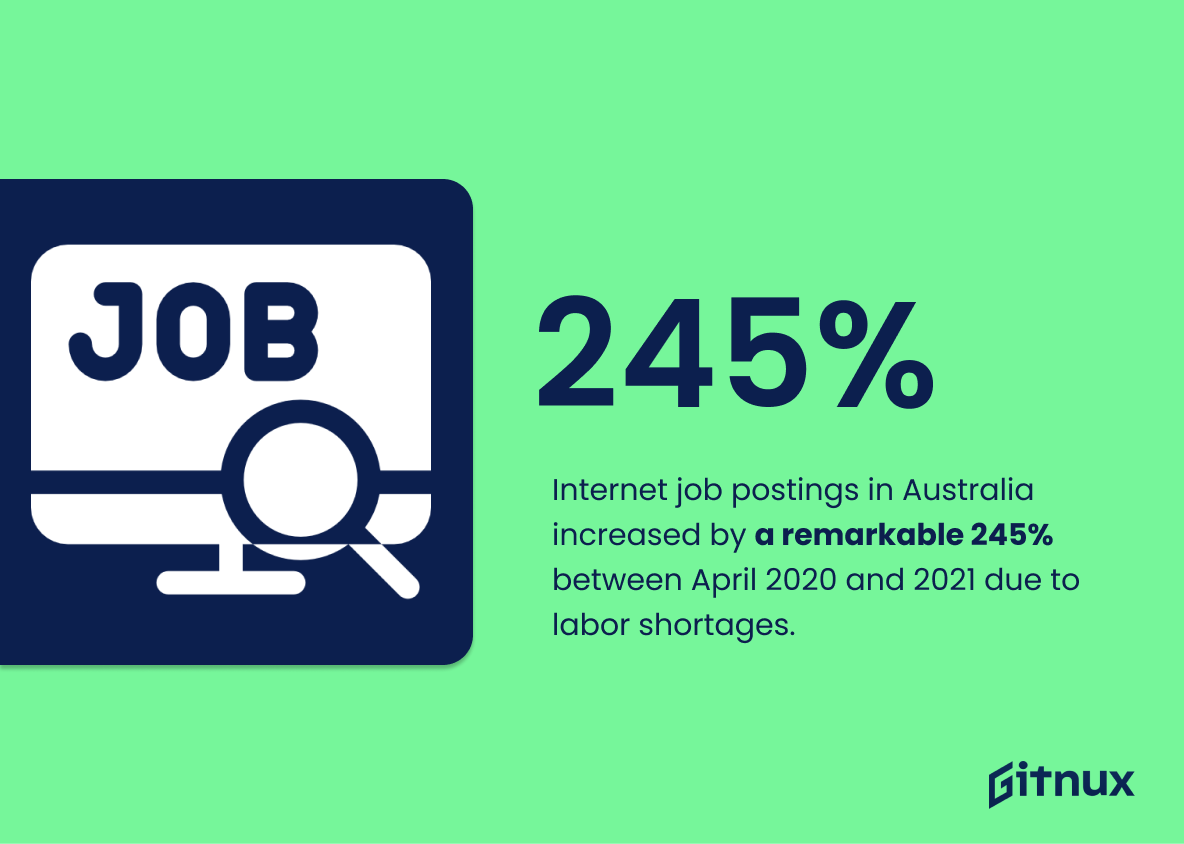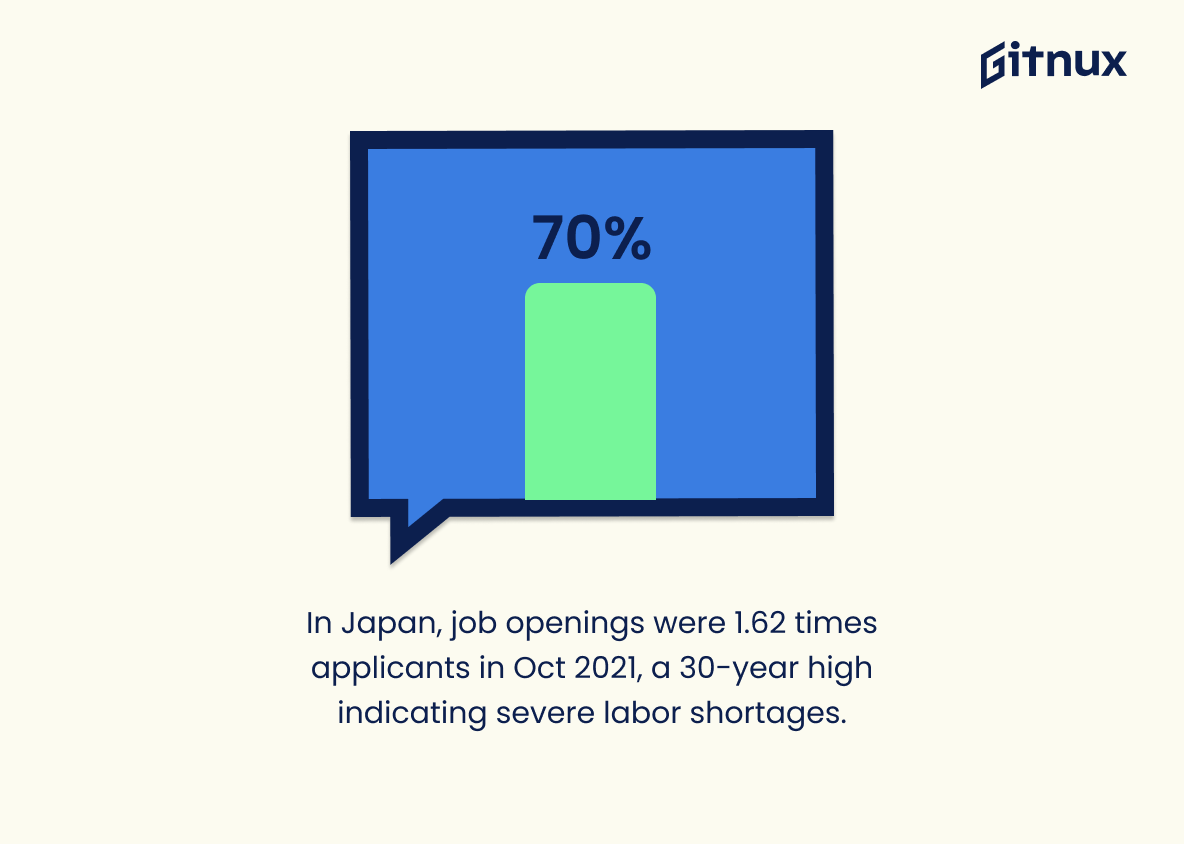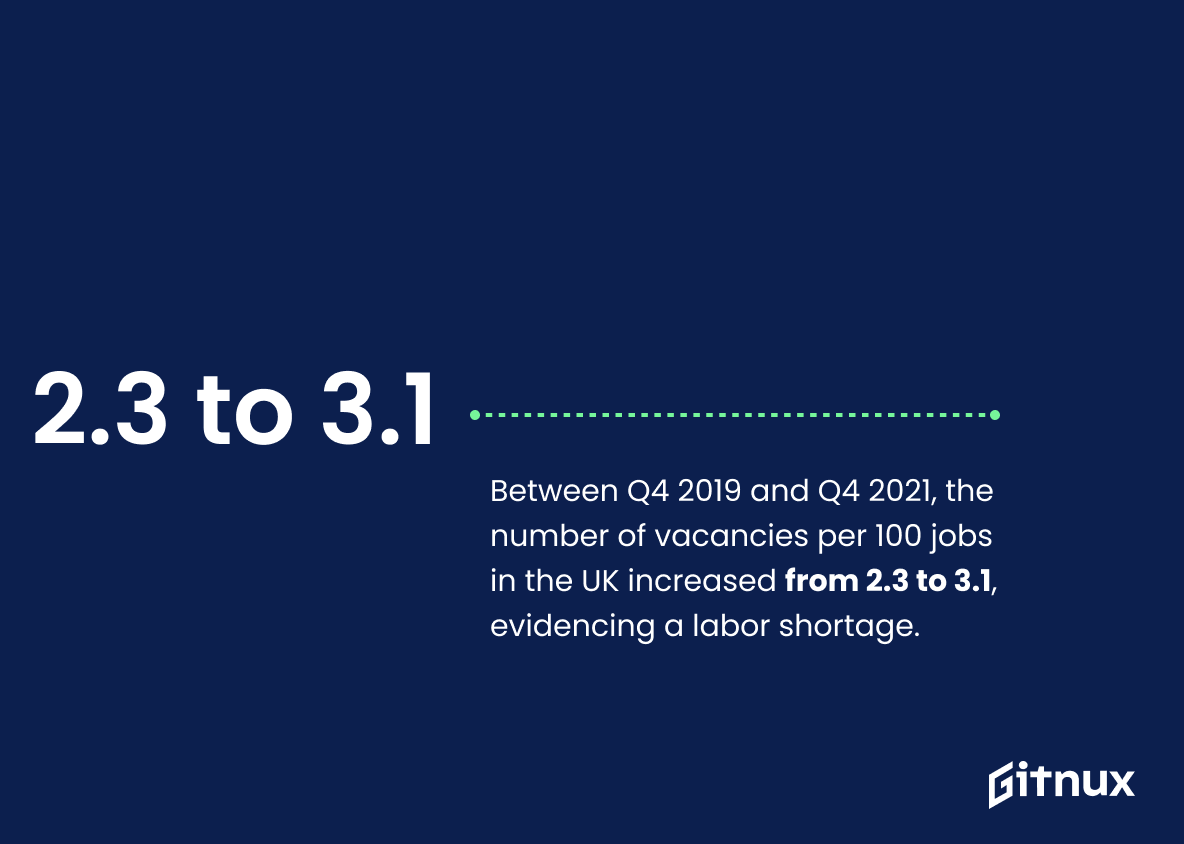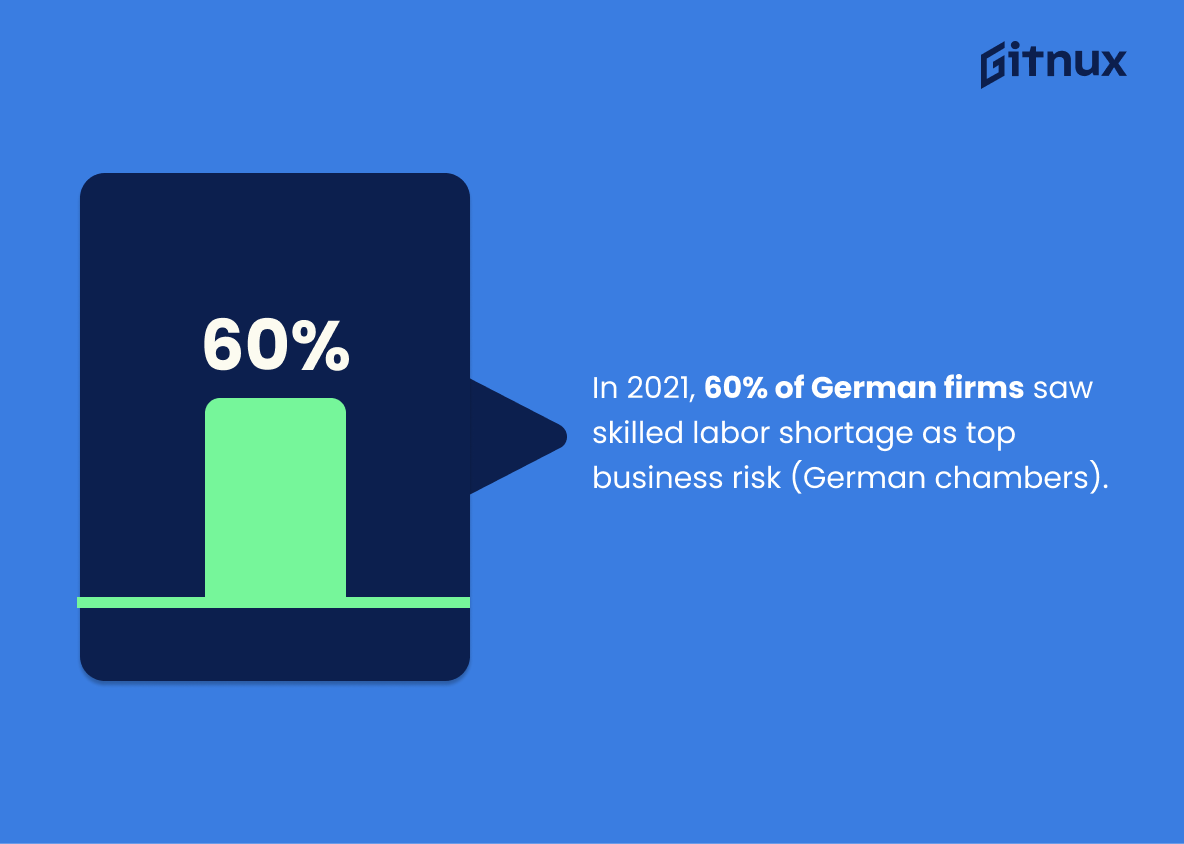In today’s rapidly evolving economic landscape, the issue of labor shortage is giving businesses, industries, and policymakers sleepless nights. This phenomenon, largely exacerbated by the recent global events, is significantly reshaping the labor market dynamics. Our comprehensive blog post looks at the hard facts and figures behind this pressing issue, aiming to provide a clearer picture of the current labor shortage through carefully researched statistics and data.
Whether you’re a business owner strategizing to overcome the shortfall, a policymaker drafting workforce strategies, or simply an individual interested in understanding the intricacies of our labor market, this in-depth exploration of labor shortage statistics offers valuable insights and prompts timely conversations.
The Latest Labor Shortage Statistics Unveiled
As of October 2021, 47% of U.S. small business owners reported job openings that couldn’t be filled – a record high.
Painting the landscape of the current labor market in the United States, the distinctive statistic reveals a compelling narrative of 47% of U.S. small business owners struggling to fill job openings as of October 2021. This elucidating figure injects a sense of urgency into discussions around labor shortage, amidst an era of unprecedented labor-market dynamics.
Soaring to a record high, this statistic invariably underscores the criticality of the labor shortages from an SMB perspective, igniting conversations about wider economic implications and the need for strategic corrective measures. It inextricably links the narrative of labor shortages to real-life scenarios, making it a pivotal discursive element within a blog post focused on labor shortage statistics.
Small businesses seeking to fill job positions in 2021 increased by 20% in comparison to 2020.
In the landscape of labor shortage statistics, the data point indicating a 20% uptick in job postings by small businesses in 2021 as compared to 2020 illuminates a noteworthy trend. This surge in job openings signifies a stiff competition for skilled labor among smaller firms, underscoring the severity of the labor shortage problem.
Not only does this highlight the growing demand for employees, it also forecasts the challenges small businesses might face in recruiting talent amidst a tightening labor market. Thus, this statistic paints a clear picture of the daunting labor issues confronting the micro and small enterprises sector, making it a vital pulse point in the larger diagnosis on the labor shortage phenomenon.
The U.S. had 10.1 million job openings as of June 2021, but only 6.7 million available workers.
Drawing a spotlight on this extraordinary statistic showcasing a disparity of 10.1 million job openings but only 6.7 million available workers in the U.S. as of June 2021, one can unfurl the tangled tale of the labor shortage. Holding both a mirror to the magnitude of the issue and a magnifying glass to its potential consequences, this number speaks volumes about the labor landscape.
Within the realms of this blog post about Labor Shortage Statistics, this number is far from just another figure. It resonates like a siren’s call for renewed focus on labor dynamics and offers a poignant commentary on the widening workforce deficit. The gap of millions — between those ready for work and the jobs waiting for them — casts a long shadow over economic recovery strategies, bringing to the forefront, the urgency to navigate and narrow this strange disconnect.
This statistic thus seamlessly integrates into our discussion, serving as an anchor grounding the abstract concept of labor shortage while igniting a thoughtful exploration into the elements dictating this stark reality in the U.S workforce.
In 2021, the UK’s hospitality sector was short of an estimated 188,ooo workers.
To paint a vivid picture, consider this compelling statistic: as of 2021, the hospitality sector in the UK fell short by a whopping estimate of 188,000 workers. Now, steeped in the context of a labour shortage, it’s clear that this statistic is not merely a number. Instead, it reveals a critical snapshot of a significant economic challenge.
It underlines the workforce deficit confronting the hospitality industry, a crucial part of the economy with a knock-on effect on other sectors, such as food services and tourism. Essentially, it provides an evidence-based backing to the narrative that there’s a growing labor shortage trend. Whether by consequence of Brexit, pandemic effect, or other factors, this stark figure underscores the urgent need to address labor shortages for the uk’s economic vibrancy and recovery post-pandemic.
Across Canada 47% of businesses reported difficulty in finding the employees they need.
Painting a vivid picture of the Canadian labor landscape, the striking statistic reveals that nearly half of businesses in Canada are grappling with substantial obstacles as they search for their ideal employees. This numeric nugget isn’t just a digit or a percentage, it’s an outcry in the corporate world, echoing across industries and throwing light on the intensity of labor shortages.
It transforms our perception, compelling readers to reconsider their views on the labor market equilibrium narrative. Hence, this statistic plays a quintessential role in our blog post, drawing attention to the labor crunch from an empirical perspective, all while facilitating an understanding of the tangible implications of labor shortages on Canadian businesses.
In France, almost half (44%) of manufacturers reported difficulties in recruiting employees in the third quarter of 2021.
Illuminating the current labor crisis, the figure exposes a stark reality: roughly 44% of manufacturers in France faced challenges in recruiting employees in the third quarter of 2021. This compelling insight sets the tone for the exigency of labor shortage, acting as a clear-cut example of how sector-specific labor scarcities can hinder industrial growth and productivity.
Spotlighting these statistics on a blog post about Labor Shortage allows readers to understand not only the severity, but also the geographic distributive aspects of this issue. The situation in France can be compared and contrasted with similar industries worldwide, offering a comprehensive perspective on the global labor shortage landscape.
According to the Bureau of Labor Statistics, the U.S. had 10.9 million open jobs as of the end of July 2021.
In the throbbing heart of a blog post about Labor Shortage Statistics, the figure from the Bureau of Labor Statistics plays a pivotal role. The assertion of 10.9 million open jobs in the U.S as of July 2021 paints a vivid picture of the scale of the labor crisis. The magnitude of these vacant positions underscores the severity of labor shortages, offering readers a quantifiable perspective into the issue.
This behemoth number acts as a powerful, persuasive microphone, amplifying the pressing issues surrounding labor shortages that the U.S grapples with. It enables an understanding of the economic impact and the critical need for solution finding.
In U.S, Labor shortages resulted in a wage increase with an average range of 0% to 6% through 2021.
Unveiling the cloak on this vital statistic, it presents itself as the heartbeat of a comprehensive analysis on Labor Shortage statistics in the U.S. Here’s why. A labor shortage stimulates significant upward momentum in wages, illustrated by an intriguing 0%-6% increase through 2021. This wage inflation doesn’t exist in isolation; it’s beautifully intertwined with the labor matrix, providing insights into the dynamic between supply and demand in the job marketplace. Furthermore, it offers a perspective into the responding strategies of firms and industries during labor scarcities.
So, in the fascinating saga of labor shortage statistics, it’s this wage growth that steals the limelight, making pivotal connections to bigger economic narratives, such as the cost of living, inflation trends, and the health of the consumer economy. Placed under the magnifying lens, this statistic then transforms from mere data into a compelling story about America’s labor landscape.
As of November 2021, 68% of U.S. construction firms report having trouble finding hourly craft workers.
Highlighting the statistic that reveals 68% of U.S. construction firms facing difficulties in securing hourly craft workers as of November 2021, serves as a potent indicator of the escalating labor shortage crisis. In a blog post dissecting labor shortage statistics, this figure is instrumental as it underlines the severity of this issue particularly in the construction industry.
This percentage fosters a better understanding of the issue at hand, framing a vivid picture of how the scarcity of craft workers – key players in the construction industry – could stall progress, inflate costs, and provoke significant schedule delays. A spotlight on this percentage, therefore, provides compelling evidence for the labor shortage predicament, making it impossible to overlook.
In August 2021, 69% of manufacturers in New Zealand were finding it difficult to recruit staff.
Delving into the labor shortage landscape, the striking revelation of 69% of manufacturers in New Zealand experiencing recruitment challenges in August 2021 serves as a lead character in this narrative. It stands as a testament, highlighting the global struggle industries are facing to fill vacancies. This not only underscores the urgency and magnitude of the issue but also draws attention to the conditions within the manufacturing sector specifically.
This information also feeds into a larger discourse on labor trends, workforce mobility, employment incentives, and the economic repercussions on local and international scales. In essence, this statistic is a critical lens through which to assess the wider employment situation and its ripple effects on multiple societal and economic fronts.
Internet job postings in Australia increased by a remarkable 245% between April 2020 and 2021 due to labor shortages.
Highlighting the impressive 245% surge in Internet job postings in Australia from April 2020 to 2021 primes us to comprehend the severity of labor shortages that the nation has been grappling with. This enlarged doorway of opportunity, represented by the surge in online job listings, confirms not only the intensifying demand for labor in the country, but it also provides concrete evidence to validate the argument of labor scarcity.
Additionally, this statistic serves as an indicator of the changing landscape of the job market, considering the constraints enforced by the pandemic, making it an indispensable reference point for discussions about labor shortage. Furthermore, statistics like this help to crystallize abstract concepts, like labor shortage, into quantifiable and relatable realities, providing readers with a more in-depth understanding of the issue.
In Japan, the job openings-to-applicants ratio was at a 30-year high of 1.62 in October 2021, showing acute labor shortages.
Witnessing the job openings-to-applicants ratio skyrocket to a 30-year high of 1.62 in Japan for October 2021, we are confronted with an intense demonstration of labor shortages. These numbers create a compelling narrative, furnishing our readers with a comprehensive picture of the colossal scale of labor scarcity that is stretching its tentacles way beyond the local to global job market.
Such a high ratio is suggestive of a job market overwhelmingly packed with unfulfilled vacancies, broadcasting alarm signals for the need to address issues surrounding labor planning and policy making. Essentially, this statistic testifies to the critical urgency and severity of labor shortages, making it a crucial inclusion in a blog post centered on Labor Shortage Statistics.
Between Q4 2019 and Q4 2021, the number of vacancies per 100 jobs in the UK increased from 2.3 to 3.1, evidencing a labor shortage.
The statistic, noting a rise in the number of vacancies per 100 jobs in the UK from 2.3 in Q4 2019 to 3.1 in Q4 2021, provides a critical focal point in our examination of labor shortage phenomena. It serves as a concrete numerical testament to the burgeoning issue of labor scarcity, painting a clear picture of the difficulties businesses face in filling positions over this two-year period.
Posing as a quantifiable gauntlet thrown by the reality of labor shortages, this statistic empowers the discourse around workforce availability, potentially shaping economic strategies and manpower planning in unprecedented ways.
According to a German chambers of commerce survey in 2021, 60% of companies cited lack of skilled workers as the main risk to their business.
Delving into the gravity of this compelling statistic from a 2021 German chambers of commerce survey, we find it serves as an illuminating key, unlocking a better understanding of the prevailing labor shortages businesses are grappling with worldwide. Here, the fact that a astounding 60% of companies pointed to the dearth of skilled workers as the main hazard to their operations, paints a telling and critical picture.
In the broad spectrum of labor shortage statistics, this finding provides a distinctive close-up view. It emphasizes the crux of the dilemma facing many businesses today – a dearth of expertise, not just hands on deck. Undeniably, it adds a deeper level, a human element, to our comprehension of labor shortage underlining the crucial need for training, education, and skill development.
This German example isn’t merely a standalone statistic, rather it mirrors an international trend affecting countless companies. Consequently, any serious discourse revolving around labor shortage statistics simply cannot afford to bypass this revealing data point. It sets the stage for discussions and solutions around skill development, vocational training, and more targeted education that focus on generating an able, expert workforce.
Conclusion
In light of the prevailing labor shortage throughout numerous sectors, businesses and policy makers must rethink their methods to address this critical issue. The severity of labor shortage effects on economies, industries, and individual businesses are unmistakable. These statistics only underscore the pressing nature of the labor deficit. By evaluating these stats, we can better understand the scope of the problem and find innovative solutions.
It’s clear that strategies such as increasing wages, benefits, and exploring flexible working arrangements, might constitute vital elements of a comprehensive response. As we tackle this labor shortage challenge, these statistics continue to be more than just figures—they represent real people and real businesses navigating a changing economic landscape.
References
0. – https://www.www.bighospitality.co.uk
1. – https://www.www.pewresearch.org
2. – https://www.www.newshub.co.nz
3. – https://www.www.politico.eu
4. – https://www.www.bls.gov
5. – https://www.www.canberratimes.com.au
6. – https://www.japantoday.com
7. – https://www.www.canadianbusiness.com
8. – https://www.www.agc.org
9. – https://www.www.industryweek.com
10. – https://www.www.ons.gov.uk
11. – https://www.www.nfib.com
12. – https://www.www.cnbc.com
13. – https://www.www.reuters.com


